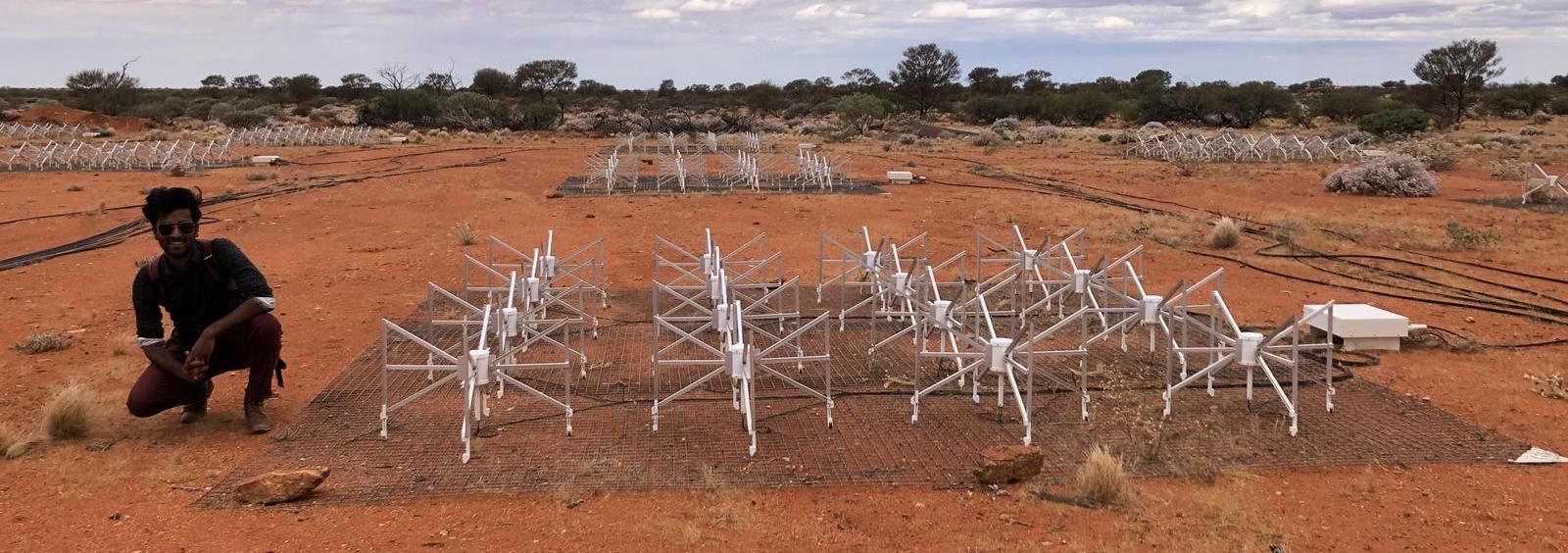My scientific research focussed on the origin story of our Universe. We think it’s about 300 million years after Big Bang when the first luminous objects start to light up a very young and dark Universe. These very first lights created bubbles of hot hydrogen gas around themselves, and over time these bubbles grew in size until they engulf the entire Universe.
We can observe neutral hydrogen with sensitive radio telescopes because it emits radio light. Studying how this radio view of the Universe changes over time, allows us to determine what those very first objects were and how they led to the formation of stars and galaxies today. However, those signals signals we’re after are much fainter compared to human-made signals, and radio emissions from nearby galaxies and our own Milky Way. To separate all these radio signals we need to carefully understand our instruments and how to correct for instrumental errors. During my PhD I worked on the theoretical understanding of different calibration methods and their flaws with the Murchison Widefield Array (MWA), pictured below. After a break from Academia I returned to work on experiments at McGill University ranging from single antennas to radio arrays deployed in the Sub-Antarctic

Science & Strategy
Astronomy is not the only place where you can find terrabytes of data. We are collecting an increasing amount of data that can positively impact our lives, society, and the environment. After my PhD I worked as a Data Scientist at the Australian Institute of Health and Welfare (AIHW). Here, I led a number of projects related to the Australian Government’s transition into the Big Data era.
My primary focus was to make data collected by state and federal governments more accessible for public use. To realise that I re-designed a data governance model to manage national integrated data assets on various health and welfare aspects, led stakeholder consultation workshops with executives across the agency, designed requirement tests for the enhancements of secure cloud computing platforms, co-managed a Cloud Support and DevOps team, spearheaded the data mapping effort for National Disability Data Asset (NDDA), and enabled machine learning capabilities across the Institute.
If you have an interesting opportunity that requires both a strategic mindset and a capacity to influence positive change, feel free to contact me on LinkedIn.
You must be logged in to post a comment.